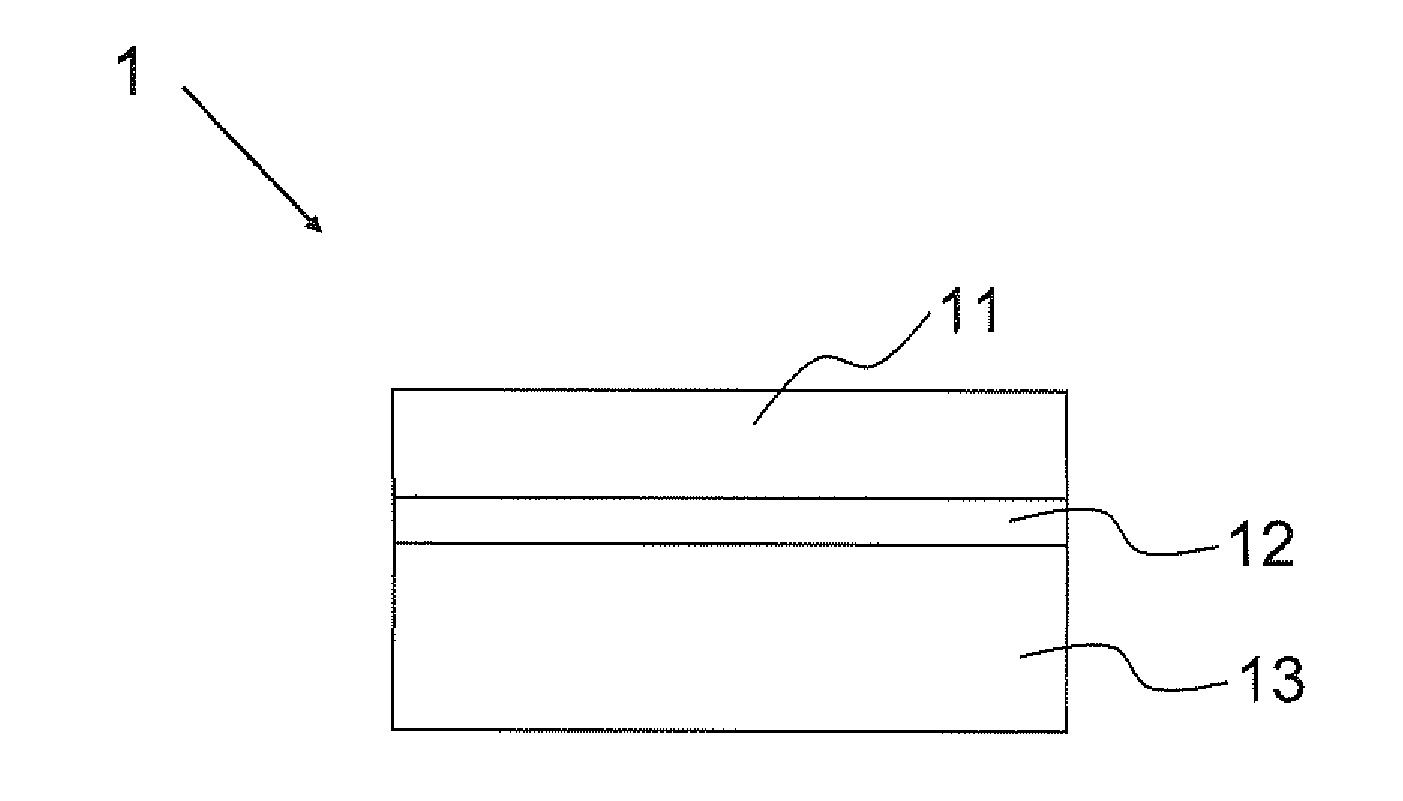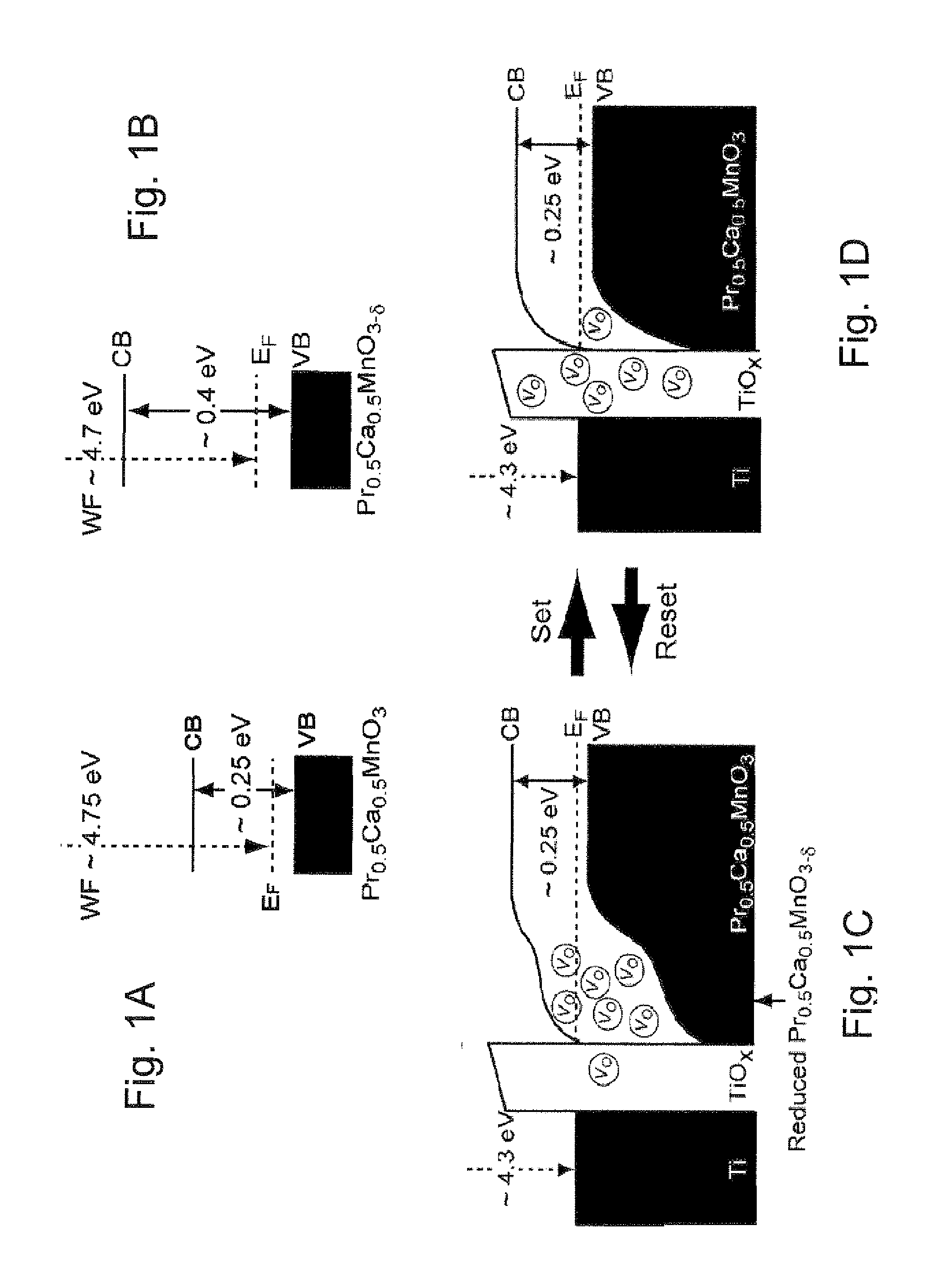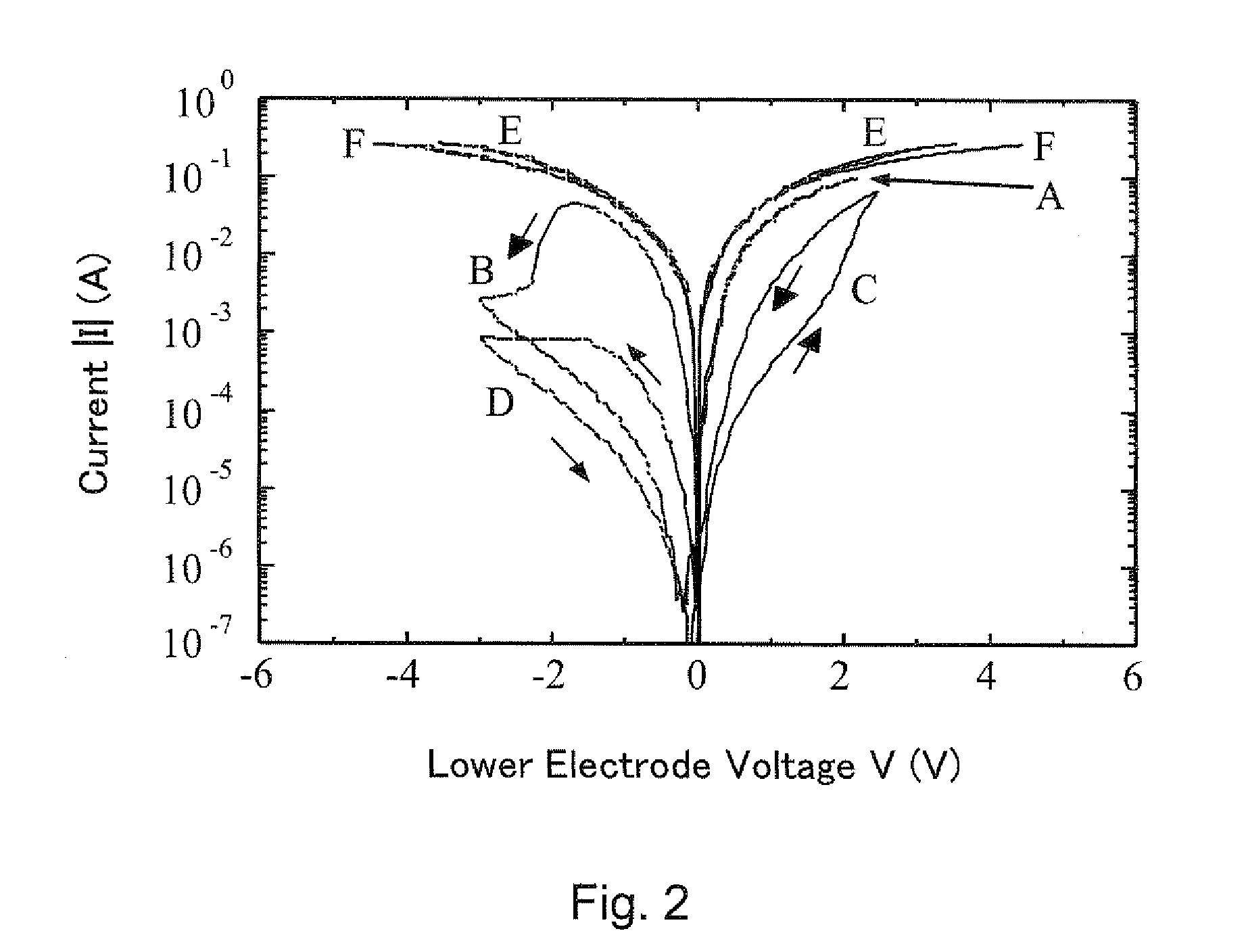Nonvolatile semiconductor memory device
- Summary
- Abstract
- Description
- Claims
- Application Information
AI Technical Summary
Benefits of technology
Problems solved by technology
Method used
Image
Examples
first embodiment
[0071]FIG. 7 is a birds-eye view schematically showing a device structure of a memory cell array 3 used in a nonvolatile semiconductor memory device according to one embodiment of the present invention (hereinafter, referred to as the “device of the present invention” occasionally). In addition, a substantial part is overdrawn for convenience of the description in the following drawings, so that a dimensional ratio of each part of an element does not always coincide with an actual dimensional ratio in some cases.
[0072]As shown in FIG. 7, the memory cell array 3 has a cross-point structure in which the above-described variable resistive elements 1 each including a lower electrode (second electrode) 13 formed on an interlayer insulation film 16 (not shown) formed on a Si substrate 10 (not shown), an upper electrode (first electrode) 11 composed of electrodes 17 and 18, and a metal oxide film 12 (12a) having a perovskite structure, are arranged in row and column directions in the form ...
second embodiment
[0111]The device of the present invention can further increase its capacity by employing a three-dimensionally-multilayered memory cell array configuration. FIG. 22 shows a circuit configuration diagram of a memory cell array 5 in which the memory cell arrays 3 shown in FIG. 7 are multilayered. The memory cell array 5 is provided in such a manner that the four memory cell arrays 3 in which the memory cells are specified by the four word lines and the eight bit lines (4×8) are laminated in a third direction (Z direction) perpendicular to the word lines and the bit lines.
[0112]Among the word lines W11 to W44 extending in the row direction (X direction), the word lines arranged in the same position in the column direction (Y direction) and in the different positions in the third direction are connected to any one of selection lines w1 to w4 extending in the common row direction through corresponding transistors in a transistor array ST1. The transistors in the transistor array ST1 are ...
PUM
 Login to View More
Login to View More Abstract
Description
Claims
Application Information
 Login to View More
Login to View More - R&D
- Intellectual Property
- Life Sciences
- Materials
- Tech Scout
- Unparalleled Data Quality
- Higher Quality Content
- 60% Fewer Hallucinations
Browse by: Latest US Patents, China's latest patents, Technical Efficacy Thesaurus, Application Domain, Technology Topic, Popular Technical Reports.
© 2025 PatSnap. All rights reserved.Legal|Privacy policy|Modern Slavery Act Transparency Statement|Sitemap|About US| Contact US: help@patsnap.com



